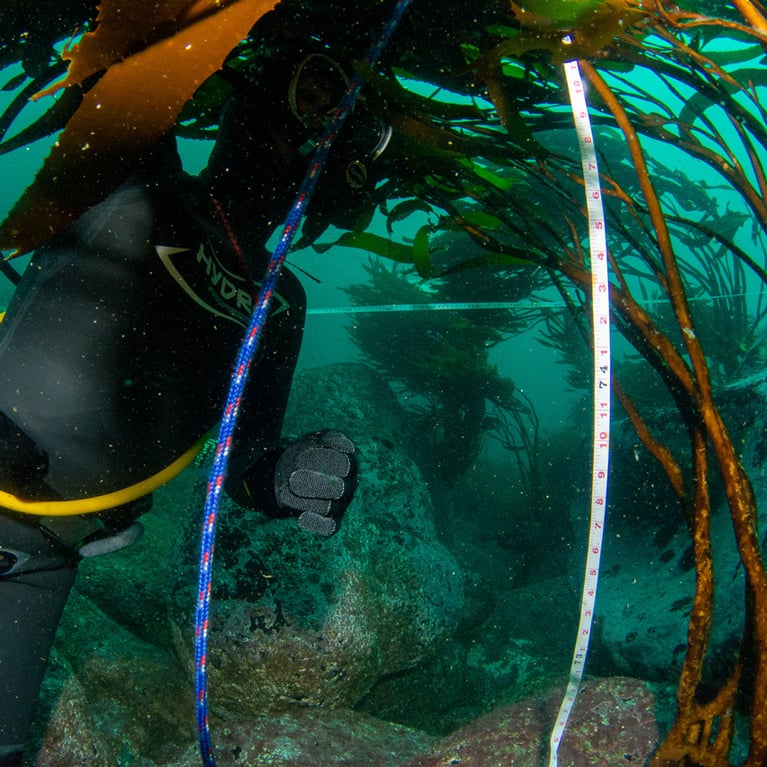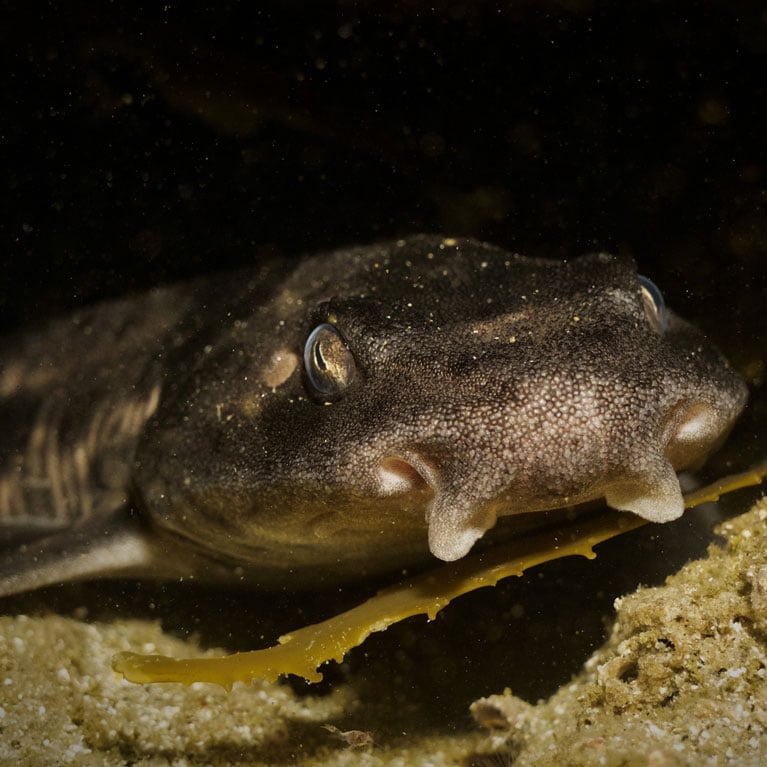The importance of kelp forests for sharks and rays in Chile
In terrestrial forests, conservationists determine a ‘conservation value’ for trees based on their ecological role as a home to scores of species. But similar attention is lacking for our submarine forests, an issue that Italo is tackling for Chile’s Humboldt kelp forests. With unregulated exploitation threatening kelp forests, Italo is focusing on the role of huiro palo kelp as sites for egg-laying sharks and rays. He wants to know what sharks are looking for when it comes to laying their eggs in kelp forests – what is it about the kelp’s structure and the forest’s density and size? Do females use the same sites within a forest? He hopes to help regulate kelp harvesting along Chile’s coast.
I was born and raised in the coastal city of Viña del Mar in central Chile, where I watched documentaries about wildlife and dreamed of becoming a marine explorer. As I grew up, I realised that I had to get closer to science to achieve my childhood dream, so I decided to begin my studies as a marine biologist at the Pontificia Universidad Católica de Chile. However, while pursuing my degree, I began to understand that most of what I knew about underwater life was based on foreign species and ecosystems. I had been missing a whole...


Valuing kelp as nesting habitats for elasmobranch: a new perspective to protect Chilean kelp ecosystems
We aim to establish a value for kelp morphological attributes and kelp forest configuration according to their importance as nesting sites for sharks and rays in Chile. This will help to improve the conservation of elasmobranchs and the management of kelp forests.
The unregulated exploitation of Humboldt kelp forests affects more than 150 species that depend on them, including sharks and rays that use the kelp structure for laying their eggs. The harvesting does not take into account the kelp’s morphological characteristics that may influence the selection of breeding sites by elasmobranchs. Studying kelp morphology and the configuration of the kelp forest preferred by these animals for egg-laying will enable us to better understand the possible effects of harvesting on coastal shark and ray populations.
Habitat degradation and loss are among the primary threats to global biodiversity. In terrestrial forests, it is well known that human activities negatively affect the physical attributes of trees, threatening species that depend on these attributes. Conservationists have developed a ‘conservation value’ for each tree species based on its physical attributes and its role in the nesting of birds and mammals. However, the effects of habitat degradation by direct human activities, such as harvesting, on the biodiversity of marine kelp forests are less well understood.
In Chile, Lessonia trabeculata or huiro palo is one of the most abundant kelp species, creating a habitat for more than 150 species. Huiro palo is commercially harvested to the extent that it represents more than 40% of the global extraction of wild kelp. Although the amount of kelp extracted annually is regulated to some extent, there are no restrictions on the morphological characteristics, such as size, of the kelp harvested. As a consequence, a change in the structure of kelp populations to a high density of short and less complex algae has been documented. Coastal elasmobranchs use forests of huiro palo as vertical substrates on which to lay their eggs. Although Chilean kelp forests have recently been recognised as important areas for sharks and rays (ISRAs) in the South Pacific, the specific characteristics of kelp that influence site selection for egg-laying have not yet been identified. The effects of overharvesting kelp may thus pose an increasing threat to coastal sharks and rays that use the kelp forest as critical breeding grounds. To guide the management and conservation of kelp and elasmobranchs, it is essential to determine the morphological attributes of kelp and the density and size structure of kelp forests that may drive the selection of egg-laying sites. With this knowledge, the conservation value of kelp can be enhanced.
- To determine the morphological attributes of kelp and the density and size structure of kelp forests selected by sharks and rays for egg-laying.
- To assess the extent to which female sharks and rays return to the same site to spawn, using molecular fingerprinting on eggs at kelp forests of contrasting size structure to understand the long-term value of kelp forest configuration.
- To understand the spatial and temporal extent of habitat use of kelp forest at a single breeding site by monitoring movement patterns and residency of the most abundant shark species.
Photos © José Tomás Yakasovic

